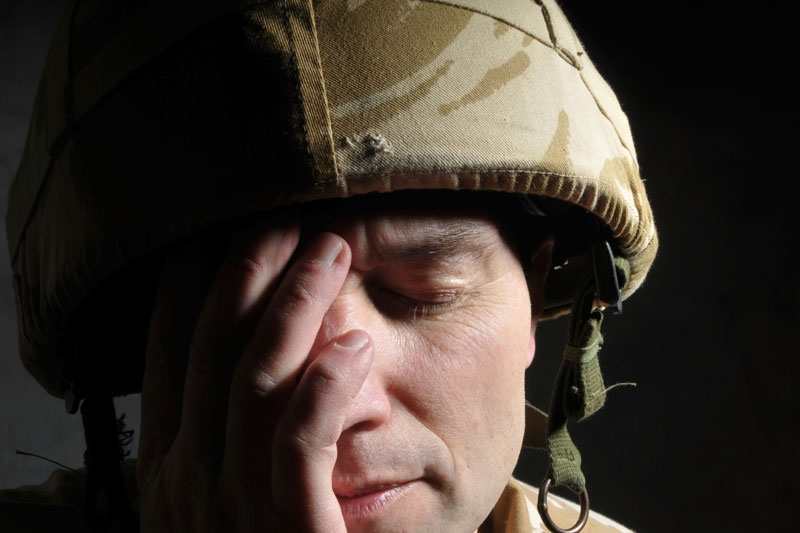The U.S. Army is under attack and commanders do not know how to deal with it.
The problem is pessimism and 770,000 soldiers – more than half of the army’s military strength – are unsure about their future in the military and unhappy about their jobs – despite a six-year, $287 million campaign to improve troop morale and resiliency according to findings obtained by USA TODAY. Data going back twelve months and ending in early 2015:
“…show that 403,564 soldiers, or 52%, scored badly in the area of optimism, agreeing with statements such as “I rarely count on good things happening to me.” Just as badly, 48% say they have “little satisfaction in or commitment to their jobs.”
The startlingly negative results come from “resiliency assessments” that soldiers have been required to take every year for each of the last six years to help commanders measure the mental and physical health of their troops.
In addition to low optimism and poor job satisfaction, more than half also reported poor nutrition and sleep with only 14% saying they are were eating well and getting enough rest.
The Army’s assessment program and “positive psychology” training began in 2009 at a time when the country was fighting two wars with suicide and mental illness rates on the rise.
Because Post Traumatic Stress Disorder (PTSD) and other mental health issues carry a measure of stigma among soldiers who pride themselves on endurance and strength, data was collected through a confidential, online questionnaire that all soldiers, including the National Guard and Reserve, must fill out each year.
In 2014, Army specialists applied formulas to measure service-wide morale and the results revealed that positive psychology techniques and methods “has not had much impact in terms of overall health” according to David Rudd, president of the University of Memphis who served on a scientific panel to assess the success of the Army’s resiliency program.
Under questioning by USA TODAY, Sharyn Saunders, chief of the Army Resiliency Directorate that produced the data, initially disavowed the results. Saunders said in March that she “sat and looked at (USA TODAY) numbers for quite some time and our team can’t figure out how your numbers came about…”
When USA TODAY gave her the supporting Army documents, she acknowledged the data but said the formulas used to produce them were obsolete saying “we stand by our previous responses.”
Following USA TODAY’s inquiry, the Army analyzed the findings using a lower threshold to define a positive result. Using the new methodology, the army reported that only 9% of 704,000 enlisted men and scored poorly in optimism.
Without explaining how the Army changed its evaluation criteria, the Army said in a statement that “We continue to refine our methodologies and threshold values to get the most accurate results possible.” According to USA TODAY,
“the Army’s effort to use positive psychology to make soldiers more resilient has been controversial since its inception in 2009. A blue-ribbon panel of scientists from the Institute of Medicine, part of the National Academy of Sciences, concluded last year that there is little or no evidence the program prevents mental illness.”
Nevertheless, the Army moved ahead with its positive psychology program at a cost of more than $50 million a year.
“The Army funds this program because the Army values the lives of soldiers and wants to instill skills and competencies that will enhance their connections, relationships and ability to mitigate stressors and exercise help seeking behaviors through their life,” says an Army statement released last month.
Results of the Army’s “Don’t worry, Be happy” program also show that:
• 370,000 soldiers showed a lack of commitment to their job or would have chosen another if they had it to do over again. Only 28% felt good about what they do.
• 300,000 soldiers or nearly 40% didn’t trust their immediate supervisor or fellow soldiers in their unit or didn’t feel respected or valued. Thirty-two percent felt good about their leaders and peers.
• A positive trend showed more than 400,000 soldiers or 53% said they were satisfied or extremely satisfied with their marriage, personal relationship or family. About 240,000 expressed dissatisfaction. And;
• Nearly 40% of soldiers felt they were in good physical shape, 28% felt they were borderline, and 33% felt they were in poor physical shape.
It is not known if Army personnel were asked, as part of the assessment, if the quality of their civilian leadership had a causal impact on their low and worsening morale.























